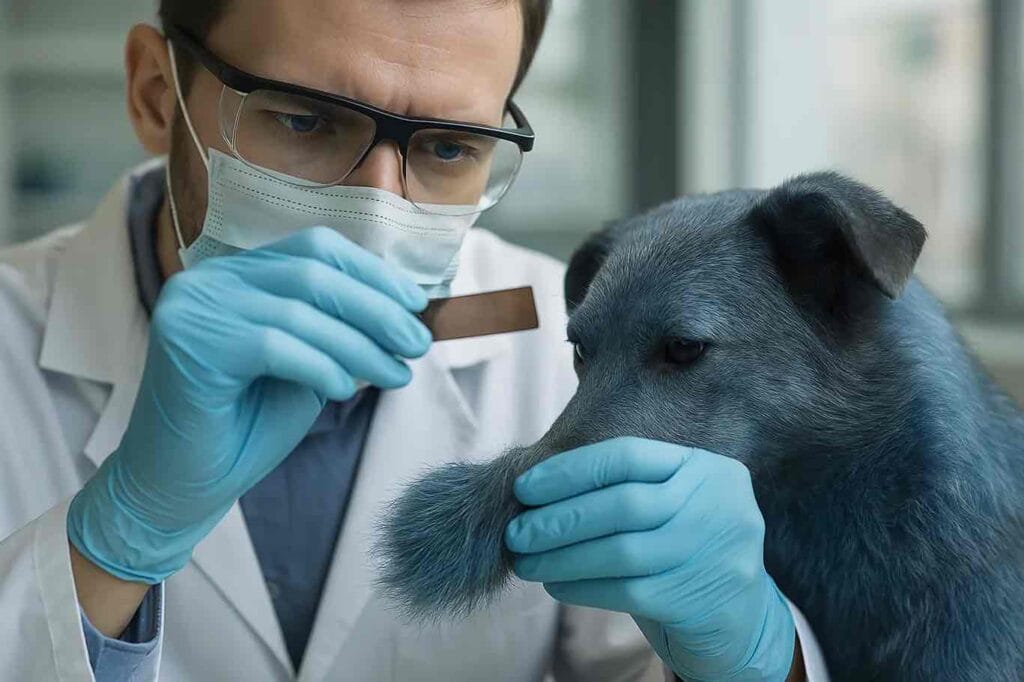In the haunting silence of Chernobyl’s Exclusion Zone, scientists have stumbled upon something that feels almost unreal — Chernobyl blue dogs. These stray animals, surviving for generations in one of the world’s most radioactive places, have developed a striking bluish tint to their fur. The discovery has reignited debates about how radiation affects living organisms and whether evolution is rewriting itself in this forgotten landscape.
Also read: Extreme Weather in Brazil Brings Rare Hope: Scientists Discover the ‘Toró’ Phenomenon
Chernobyl Blue Dogs: A Genetic Puzzle in a Radioactive World
When researchers returned to study the Chernobyl blue dogs, they expected to find traces of radiation in their DNA, but not the vivid, shimmering coat color that now distinguishes them. Scientists speculate that this strange hue may not come from radiation itself but possibly from chemical reactions between minerals in the soil and compounds in the dogs’ fur. Others suggest that long-term exposure to environmental toxins could have triggered subtle mutations in wildlife, giving rise to this peculiar blue shade.
The dogs roam near the remains of the nuclear plant, scavenging for food and surviving in small packs. Despite decades of harsh conditions, they have continued to breed, showing remarkable resilience. Some biologists have even called them “living experiments” of adaptation — proof that life persists where it shouldn’t.
Life After the Blast: Survival in the Exclusion Zone
Since the 1986 disaster, the radioactive animals of Chernobyl have fascinated scientists worldwide. Deer, wolves, and now dogs have all found ways to live amid invisible radiation fields. The blue dogs, however, are unique — their fur makes them visible symbols of Chernobyl’s strange legacy.
Recent DNA analyses aim to determine whether these canines are genetically distinct from ordinary dogs in nearby towns. Early results hint that they might be — suggesting decades of isolation have formed a unique subspecies adapted to radioactive surroundings.
Meanwhile, researchers have collected hair samples to test whether trace amounts of cobalt or copper could explain the blue hue. While the results remain inconclusive, the findings could help reveal how ecosystems evolve in extreme conditions — a theme that may reshape our understanding of survival itself.

The Global Fascination with the Blue Dogs of Chernobyl
The appearance of the Chernobyl blue dogs quickly went viral, with photos circulating across social media and sparking a wave of curiosity and speculation. Some saw beauty in their survival — proof that life adapts even after catastrophe. Others viewed the Chernobyl blue dogs as a chilling reminder of humanity’s impact on the planet.
As interest grows, Ukraine has faced new waves of visitors and researchers hoping to document the phenomenon. Yet authorities warn that the area remains unsafe for prolonged exposure, as radiation hotspots still exist throughout the zone.
For now, these dogs remain both a scientific mystery and a haunting symbol of resilience. Their strange color — whether mutation, mineral reaction, or coincidence — continues to raise ethical and environmental questions about the long-term effects of nuclear disasters.
Conclusion: Lessons from the Chernobyl Blue Dogs
The story of the Chernobyl blue dogs isn’t just about mutation or survival — it’s about adaptation, endurance, and the unpredictable creativity of nature. Whether their unusual fur results from radiation, minerals, or evolution itself, these animals remind us that life finds a way to persist, even in the ruins of human tragedy.
[1] Source available upon request.
Also read: Delivery Robots in the UK: How Autonomous Machines Are Transforming Small Town Life







